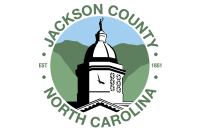The spirituality of mountain graveyards
“I am developing a taste for walking in cemeteries.”
– Jules Renard, “Journals” (December 1909)
Like Jules Renard, a turn-of-the-century French novelist, not a few of us are attracted to cemeteries. When looking for a quiet place, I often visit the one on Schoolhouse Hill next to the old Swain High football field in Bryson City. There’s a good view, in places, of the town and surrounding mountains. A grove of massive oaks shade the burying ground. It’s a good spot to have lunch.
There is a haunting weather-darkened fly-specked stone angel that I always go over and speak to when there. Brought by train and wagon from Asheville by famed novelist Thomas Wolfe’s father in 1904, this Swain County angel corresponds more fully to the few details known about the novelist’s angel than the Henderson County nominee. But that’s a long somewhat contentious story that I’ve told too many times. (You can no doubt Google it up on the Internet if you like.)
Suffice it to observe here that Wolfe’s father, W.O. Wolfe (1851-1922), operated a monument shop on Pack Square in Asheville from the mid-1890s until 1916. He did engraving and some rough stone carving, even attempting his own stone angels, but never to anyone’s satisfaction. The fine angels he marketed were sculpted in Italy from white marble extracted from the famous Carrara quarries. From the time Wolfe (1900-1938) was born until he left for Chapel Hill to attend the University of North Carolina in 1915, he had ample opportunity to view and contemplate a variety of these brooding figures. In retrospect, it’s no surprise that one appears in the short story “An Angel on the Porch,” published in 1929 in Scribner’s Magazine, or that it was incorporated into the novel Look Homeward, Angel in the fall of 1929.
She’s a beautiful angel, who always reminds me of poet William Blake’s angels. Blake was a genuine mystic … the real deal. Coleridge required doses of laudanum and brandy to jumpstart his visions. Blake drank a dark ale or two now and then, but he was preternaturally spellbound.
Related Items
But I wander. Our topic is cemeteries. In the 1990s I happened upon Camille Wells’ book Canton: The Architecture of Our Home Town (Canton Historical Commission in 1985) and read therein the section devoted to Locust Field Cemetery. Now that’s a first-rate name for a cemetery. I couldn’t resist.
Situated on the crest of a ridge southeast of Canton’s downtown area, the cemetery was (back then at least) open and windswept, affording a panoramic view of the encompassing mountain ranges. The old-time settlers generally had an unerring eye for locating homes, barns, villages, and other essential sites, and they didn’t miss the mark when deciding to bury their beloved dead upon this vantage point.
“To the casual observer, Locust Field appears to be largely an early 20th century cemetery,” Wells wrote. “A river rock and cement arch, erected around 1920, punctuates the entrance and the northernmost corner of the cemetery, and visually dominates the site. Furthermore, a majority of the gravestones and furniture, such as curbs, steps, fences, and boundary markers date from the years between 1910 and 1930. There is some irony in this: the period during which Canton’s population was growing most rapidly was also the time when the burial ground was most heavily utilized. The cemetery contains gravestones fashioned according to every style that was popular in nineteenth- and twentieth-century America, but the most important stones are the some thirty markers that were carved from hand from local sandstone and granite. The legible stones date from as early as 1817, and there is reason to conclude that this surviving group represents only a fraction of the original assemblage. All of the markers were erected during decades before the railroad made a wider range of materials and craftsmanship available to Pigeon River residents, and they are the results of a sequestered community’s attempts to provide for its own needs.”
Wells noted that there are many markers “with irregular shapes, simple embellishments, or uneven lettering, demonstrating that there were limits to the stonemasons’ skills or to available tools. Some spellings, such as ‘bornd,’ ‘Roady,’ or ‘Sary’ provide evidence of pronunciations common to these mountain people.”
They weren’t per say “misspellings” … they were transcriptions of accepted pronunciations. I’d never thought of it that way.
Wells’ closing remarks are a good enough place for us to end this ramble: “Most of the gravestones bear names like Smathers, Medford, Cabe, Reno, Hall, and Haynes that are still familiar in Canton today, and it is this fact that most directly demonstrates the importance of these crumbling markers. They represent a continuity between Canton’s recent history as a densely settled industrial town with access to and ties with the outside world, and Pigeon River’ more distant past as an isolated agrarian community where fields and woodland — and a sleepy shallow river — dominated the sparsely populated mountain landscape.”









